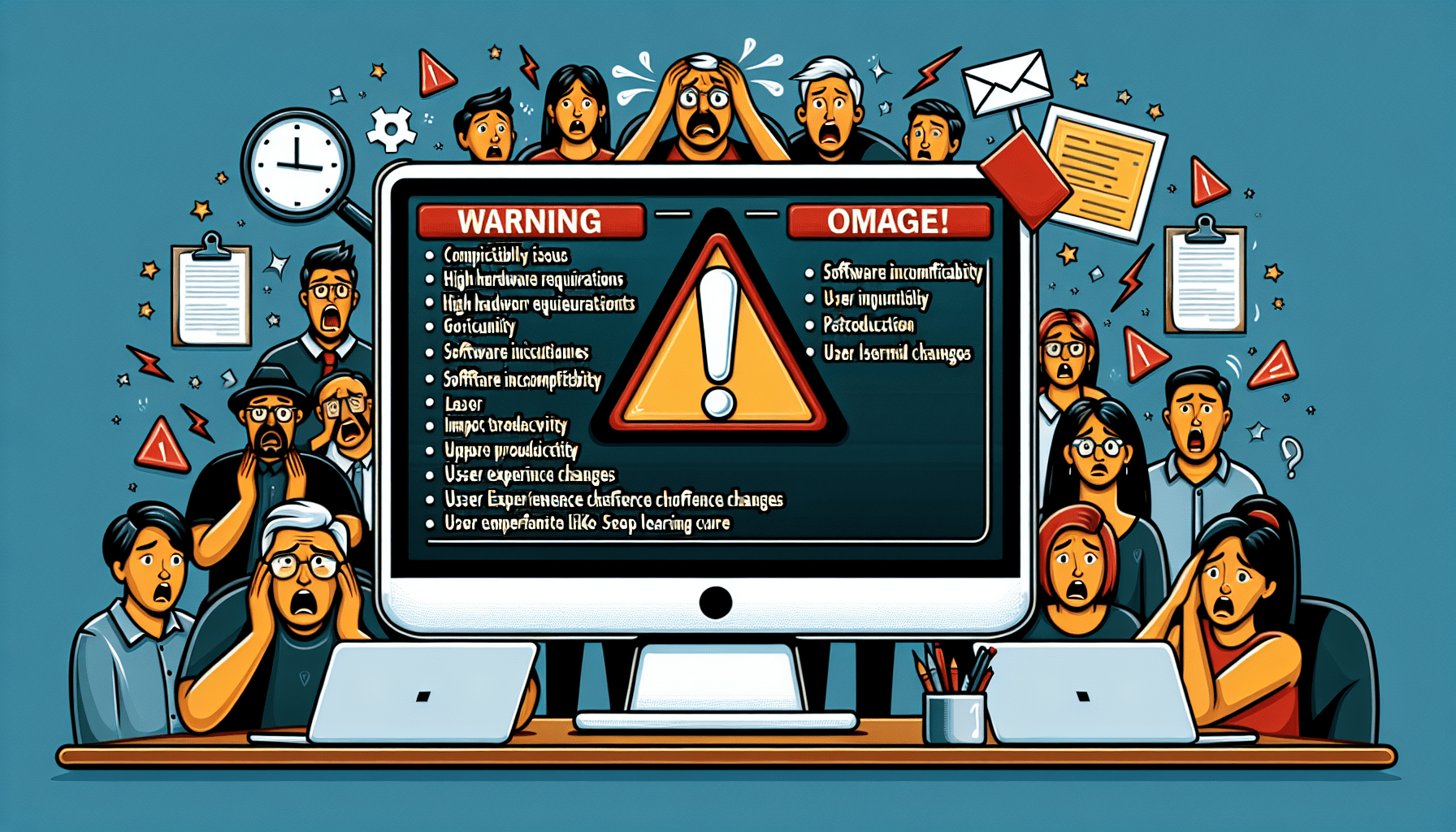







If you find yourself wondering how to securely wipe a laptop before disposal, you’ve come to the right place! In this article, we’ll explore the importance of securely wiping your personal information from your laptop before parting with it, and provide you with some simple steps to ensure your data is completely erased. So, let’s dive in and discover how you can confidently bid farewell to your laptop while keeping your sensitive information safe and secure.
Understanding the Importance of Data Security
In today’s digital age, data security is of utmost importance. With increasing instances of cybercrime and personal information leaks, it is crucial to take necessary steps to protect your sensitive data. One such step is securely wiping your laptop before disposal. By doing so, you ensure that all your personal information and sensitive data are permanently erased from the device, reducing the risk of unauthorized access and potential data breaches.
Reasons to Wipe a Laptop Before Disposal
There are several reasons why it is important to wipe a laptop before disposing of it. Firstly, when you sell, donate, or recycle your laptop, you don’t want any of your personal information, files, or passwords to end up in the wrong hands. Wiping your laptop ensures that all your data is permanently deleted, making it difficult for anyone to retrieve it.
Secondly, even if you plan to keep your laptop unused for an extended period, it is still advisable to wipe it before storage. This is because data remnants may still exist on the storage device even if you have formatted or deleted files. These remnants can be accessed by sophisticated recovery tools and pose a potential security risk.
Potential Risks of Improperly Disposing Electronics
Improper disposal of electronics, including laptops, can lead to various risks. When you throw away your laptop without securely wiping the data, you run the risk of exposing your personal information to identity thieves and hackers. They can retrieve your data and misuse it for financial gain or other malicious purposes.
Additionally, electronic waste or e-waste poses environmental risks if not disposed of properly. Many electronic devices contain hazardous materials such as lead, mercury, and cadmium, which can potentially contaminate soil and water if not handled correctly. Therefore, it is imperative to dispose of electronic devices responsibly to minimize the environmental impact.
Understanding Data Breaches and Personal Information Leaks
Data breaches and personal information leaks have become increasingly prevalent in recent years. A data breach occurs when unauthorized individuals gain access to confidential data, such as usernames, passwords, credit card information, or social security numbers. This breach can happen due to various reasons, including hacking, malware attacks, or human error.
Personal information leaks, on the other hand, generally involve the unintentional disclosure of sensitive data. This can happen through misconfigured databases, accidental email attachments, or lost physical documents. Regardless of the cause, the consequences of data breaches and personal information leaks can be severe, ranging from financial loss to identity theft.
Knowing Your Device and Data
Before proceeding with the data wiping process, it is essential to understand your laptop’s storage types and identify sensitive data that needs to be securely erased. Most laptops come equipped with either a hard disk drive (HDD) or a solid-state drive (SSD).
An HDD uses spinning platters and magnetic heads to store data, while an SSD relies on flash memory technology. It is important to note that SSDs may have built-in encryption capabilities, which can further enhance data security.
To identify sensitive data on your laptop, start by considering personal files such as documents, photos, videos, and emails. Additionally, pay attention to web browser history, saved passwords, and any stored login credentials for online accounts. By understanding your device and the data it contains, you can prioritize and ensure the secure erasure of sensitive information.
Furthermore, it is also essential to recognize the different types of digital footprints that may exist on your laptop. These footprints can include temporary files, cookies, cache data, and residual information from applications or browsing activities. While they may not be as critical as personal files, it is still recommended to remove these footprints for a more thorough data wiping process.
Preparing Your Laptop for Data Wiping
Before you can safely wipe your laptop, it is crucial to make necessary preparations. These preparations include backing up important files, ensuring you have the necessary software tools, and disconnecting from the internet and cloud services.
Backing up important files is the first step in ensuring that you don’t lose any valuable data during the wiping process. This involves transferring your personal files and documents to an external storage device or cloud storage solution. By creating a backup, you can easily restore your important files to a new device or after reinstalling the operating system.
In addition to backups, you will need the necessary software tools to securely wipe your laptop. There are several reputable data erasure software options available in the market. Choose a software tool that suits your needs and is compatible with your laptop’s operating system. It is recommended to research and read reviews about different software tools before making a decision.
Before initiating the data wiping process, it is essential to disconnect your laptop from the internet and disable any cloud services such as automatic backups or synchronization. This ensures that your data doesn’t get inadvertently saved or transferred to external servers during the wiping process. Disconnecting from the internet and cloud services adds an extra layer of security during the data wiping process.
Methods of Wiping Data
There are several methods available to wipe data from a laptop effectively. These methods include the overwriting process, degaussing or demagnetizing method, and physical destruction of the storage device.
The most commonly used method is the overwriting process, which involves replacing the existing data on the storage device with random characters. This process makes it difficult to recover the original data, even with specialized recovery tools. Overwriting can be done using software tools specifically designed for data wiping.
Degaussing or demagnetizing is another method used for erasing data, primarily used for magnetic storage devices such as HDDs. This process involves exposing the storage device to a strong magnetic field, effectively erasing all data. However, it is important to note that degaussing is not suitable for SSDs, as they do not rely on magnetism for data storage.
In cases where security is of utmost importance, and reuse is not a consideration, physical destruction of the storage device is the final method. This involves physically damaging the storage device, rendering it unreadable and unrecoverable. It is crucial to follow proper safety protocols and dispose of the destroyed storage device responsibly.
Using Software Tools for Data Wiping
Using software tools for data wiping provides a more convenient and efficient way to securely erase your laptop’s data. When choosing data erasure software, consider factors such as the software’s reputation, compatibility with your laptop’s operating system, and the level of security it offers.
Once you have selected the appropriate software, read the user guide or follow the instructions provided by the software developer to execute the data wiping process correctly. These instructions usually include steps such as selecting the drive or partition to be wiped, choosing the desired wiping algorithm, and confirming the process before initiation.
During the data wiping process, the software will overwrite the selected data with random characters or predefined patterns. This ensures that the original data is irrecoverable, providing a high level of security. After the process is complete, the software may provide a report or confirmation of successful data erasure.
Just like any other solution, using software for data wiping has its pros and cons. The advantages include ease of use, flexibility in choosing wiping algorithms, and the ability to selectively wipe specific files or partitions. However, it is important to note that software-based wiping may take a significant amount of time, depending on the size of the storage device and the chosen wiping algorithm.
Reinstalling the Operating System
Reinstalling the operating system (OS) after data wiping provides an additional layer of safety and ensures the removal of any residual data. This step is especially useful when you plan to sell or donate your laptop, as it provides a clean slate for the new owner.
To reinstall the OS, you will need the installation media or recovery partition specific to your laptop’s brand and model. Generally, the process involves booting the laptop from the installation media, following the on-screen instructions, formatting the hard drive or partition, and installing the desired operating system. It is essential to properly format the drive to eliminate any remaining traces of data.
While reinstalling the OS after data wiping provides enhanced security, it is important to consider the following pros and cons. The advantages include complete removal of data remnants and ensuring a fresh start for the new user. On the flip side, the process can be time-consuming, and you may need to reinstall any software or personal files that were not backed up.
Physical Destruction of Hard Drive
In certain scenarios where the utmost security is required, physical destruction of the hard drive is a viable option. This method ensures that the data is completely unrecoverable and provides peace of mind, especially for highly sensitive information.
When and why to opt for physical destruction? If you have highly confidential data, such as classified documents or trade secrets, that should not fall into the wrong hands, physical destruction is the recommended method. Physical destruction is also suitable in cases where the storage device has become physically damaged or is no longer functional.
There are several methods available for physically destroying a hard drive. One common method involves using a hard drive shredder, which mechanically crushes the drive into small, irreparable pieces. Another method is drilling or punching holes through the drive, rendering it unreadable and unusable. These methods should only be carried out by trained professionals or in a certified e-waste recycling facility.
After physically destroying a hard drive, it is crucial to ensure appropriate disposal. You can take the destroyed drive to an authorized e-waste recycling center, where they will handle the disposal in an environmentally friendly and secure manner. Proper disposal ensures that the remains of the hard drive do not end up in landfills, minimizing the risk of environmental pollution.
Using Professional Data Destruction Services
In certain situations, you may want to consider utilizing professional data destruction services. These services specialize in wiping or destroying sensitive data and offer a higher level of security and assurance compared to DIY methods.
Professional data destruction services typically have specialized equipment, trained technicians, and rigorous processes to ensure data eradication. They can handle large quantities of electronic devices and provide certificates of data destruction as proof that your data has been irreversibly erased.
When should you consider a professional service? If you have a significant amount of sensitive data or have data erasure requirements that surpass what can be achieved through DIY methods, opting for professional data destruction services is a prudent decision. This is especially true for businesses that handle large volumes of confidential information or industries subject to strict data privacy regulations.
When choosing a professional data destruction service, it is vital to do thorough research and consider factors such as their reputation, adherence to industry standards, and certifications. Ensure that the service aligns with your specific data security needs and provides appropriate documentation of the data destruction process.
Aftercare and Environmentally-Friendly Disposal Options
After securely wiping your laptop and ensuring the complete eradication of data, there are several steps you can take for aftercare and environmentally-friendly disposal. These steps include checking disposal regulations in your area, exploring options for recycling or donating your device, and minimizing electronic waste.
It is essential to understand the disposal regulations in your area to ensure compliance with legal requirements. Some regions have specific guidelines for electronic waste, including laptops, and may provide information on authorized recycling centers or designated drop-off points.
If your laptop is still in working condition, consider exploring options for recycling or donating your device. Many organizations or charities accept used laptops for refurbishment or redistribution to individuals or communities in need. This way, you can extend the lifespan of your laptop and contribute positively to society.
Minimizing electronic waste, also known as e-waste, is crucial for environmental sustainability. When purchasing a new device, consider its lifecycle and the impact it may have on the environment. Choose devices that are designed for easy repair, have longer lifecycles, or are made with more sustainable materials. By making conscious choices, we can collectively reduce the amount of electronic waste generated and promote a healthier planet.
Ensuring Complete Data Erasure
After going through the data wiping process, it is important to verify if your data has been fully erased. There are several signs that indicate successful data erasure, as well as possible remnants that may still exist.
One sign of complete data erasure is when the data wiping software or tool provides a confirmation or report stating that the process was successful. This documentation serves as evidence that your sensitive data has been irreversibly wiped.
However, data remnants can still exist at times, even after performing proper data wiping procedures. These remnants may be due to technical limitations, unreadable sectors, or hidden partitions. While they may not pose a significant security risk, it is important to be aware of their presence.
If residual data remains after wiping, you have a few options. You can attempt to re-wipe the affected areas using different data wiping algorithms or software tools. Alternatively, if you are disposing of the laptop, you can consider physically destroying the storage device to ensure complete data destruction.
In conclusion, wiping your laptop before disposal is a crucial step in ensuring data security. By understanding the importance of data security, knowing your device and data, preparing your laptop properly, and employing the right data wiping methods, you can protect your sensitive information from falling into the wrong hands. Whether you choose to use software tools, reinstall the operating system, physically destroy the hard drive, or rely on professional data destruction services, it is essential to take the necessary steps to securely wipe your laptop and dispose of it responsibly.







